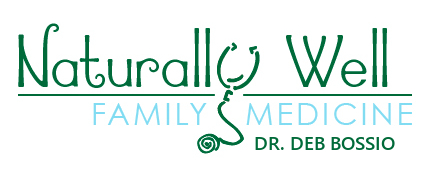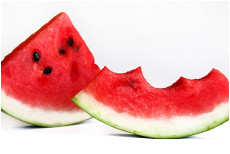It pays to be a smart shopper, but even more so when it comes to farmers markets. You want to get the most bang for your buck, but do you know what farmers market “bang” looks like? From finding the farmers market and convenience methods that works best for you, to finding the best foods and identifying your favorite producers, these 8 tips will help you navigate and get the most from your local farmers market. If you can’t find a good farmers market in your area or are having trouble finding a particular kind of food, planting a garden is a great natural solution.
1. Map your market options. Shopping farmers markets and trying to save time and money without sacrificing quality and availability are tasks that require planning. The first step in this process is to find out where the markets are in your area. You may already know of a couple, but it could pay to keep your options open. The nonprofit organization, LocalHarvest, makes this step easy. Their website features a grassroots directory of over 30,000 family farms and farmers markets, along with restaurants and grocery stores that feature local foods. Additionally, LocalHarvest offers customized updates about events and markets in your area, making it easy to keep up with changes and announcements. Once you have your list, you can begin to choose which markets you would like to try, based on standard facts such as days and times of operation, size and market rules and regulations.
2. Develop a carrying strategy. By shopping farmers markets, you’re already improving your eating and shopping habits. Keep that momentum going and do your part to improve the environment and save your farmers some money at the same time – bring your own bags. If investing in reusable totes, you might want to consider the sturdy, flat-bottomed variety for produce and an insulated tote or small cooler for perishable goods. Also, farmers markets don’t usually have carts, but strollers make an excellent substitute. Don’t have a stroller? Check your local thrift shops for inexpensive options.
3. Bring small bills, score big rewards. Farmers markets and vendors vary when it comes to the types of payments they will accept. Bringing along small-denomination bills ensures that vendors are paid quickly and that the purchasing process goes smoothly no matter which vendor you’re shopping with. Your reward, this one little gesture will undoubtedly create good will with vendors.
4. Peruse first, purchase last. While every farmers market is different, they all use a fair-like booth setup. When you arrive, take your time and take everything in. Stand at the front and look around, taking stock of the setup. As you make your way around to each vendor, hold off on making a purchase. Instead, take mental notes of things like prices, quality and variety of options. Once you’ve browsed them all and asked any questions you might have (more on this later) you can make educated choices about who to purchase from.
5. Know what you’re looking for and how to find it. Market guidelines that govern what is allowed to be sold vary greatly. Some markets permit only vendors who offer goods they’ve produced or grown themselves, while others might allow vendors to sell commercially purchased products and/or foods. If you’re unsure about whether a vendor’s wares are local or handmade, ask them. Also, when looking for organic produce, it is important to note that the organic certification process is costly and small farms may follow organic farming principles but not be able to afford the certification process. Be sure to always ask vendors about their farming philosophy and practices. Visit the Environmental Working Group (www.ewg.org) for a quick list of fruits and veggies to buy organic.
6. Be a student of nature and health. Keep a notebook and take notes, during both your preparation and while at the market. Crops and growing and harvesting seasons vary by region. In the long run, you will benefit from writing down the dates when you see your favorite ingredients first being sold. This will help you familiarize yourself with the natural cycle of food availability in your area. Incorporate notes from at home taste tests and notes about different vendors. Find out where they sell their products and when. Ask about their growing philosophy and practices. And make a note of where their farm is located, so if ever they don’t have something or aren’t available, you can look for another vendor from the same area, which could provide similar tasting products.
7. Get to know your farmers as people. Think of them as your favorite neighbor. Introduce yourself and learn their names and the name of their farm and business. When the booths aren’t busy, take a couple of minutes to stop and chat. It doesn’t matter what you talk about, just make a point of socially interacting with the people who feed your family. This will communicate your appreciation but go ahead and thank them while you’re at it. Respect goes a long way at the farmers market.
8. Conduct your own at home taste test. Nutritional and culinary qualities of foods vary based on a variety of factors including farming/raising techniques, geography and even handling methods. Conducting your own taste test of available foods is an excellent way to learn more about the foods and to figure out which vendors tend to produce your favorites. You’ll want to purchase several of the same items from different vendors. Be sure to note the vendor’s name, the price you paid and any other notes, such as the quantity and quality of the selection, the latter of which you’ll learn more about as you taste the bounty.
To make it even easier for those of you living in or around Ridgefield, here is a list of the closest farmers markets. As these dates and times are subject to change, be sure to contact the appropriate local chamber of commerce.
- Bethel: Saturdays, 9 am – 1 pm June 21 - December 20 Rte. 6, Fairfield Cty Extension Service Bldg 67 Stony Hill Rd, opposite Stony Hill Inn
- Brookfield: Fridays, 3 pm - 6 pm July 11 - October 24 Brookfield Municipal Center, 100 Pocono Road
- Danbury: Fridays, 11 am - 5 pm June 27 - October 31 Kennedy Park Corner of Main Street & Kennedy
- Darien: Wednesdays, 11 am – 4 pm May 28 - october Mechanic Street behind fire house darienfarmersmarket.net
- Georgetown: Sundays, 10 am – 2 pm June 15 - October 26 4 Old Mill Road
- New Canaan: Saturdays, 10 am – 2 pm May 17 - November 22 Old Center School Parking lot South Ave & Maple Street newcanaanfarmersmarket.net
- Newtown: Tuesdays, 2 pm - 6 pm June 24 - October 14 Fairfield Hills Campus at Wasserman Way
- Norwalk - Health Department: Wednesdays, 10 am - 2 pm July 9 - November 5 Norwalk Health Dept., 137 East Avenue
- Norwalk - Rainbow Plaza: Wednesdays, 11 am - 3 pm May 14 - November 19 205 Main Street
- Ridgefield: Thursdays, 1:30 pm to 5:30 pm June 5 - Ridgefield Comm. Center/Lounsbury House 316 Main Street 203-438-6962
- Westport: Thursdays, 10 am – 2 pm May 22 - November 5 Opening 5/22, then move to Saturdays 27 Imperial Avenue, Municipal Parking Lot westportfarmersmarket.com
- Wilton: Wednesdays, 12:30 pm - 5 pm June 11 – October 1 224 Danbury Road Wilton Historical Society wiltonfarmersmarket.com
REFERENCES
Photo Credit. FreeImages.com. http://www.freeimages.com/photo/162212
Local Harvest. http://www.localharvest.org/.
The Pros Reveal: How to Shop at the Farmers’ Market. iVillage.com. http://www.ivillage.com/savor-moment-9-tips-smart-farmers-market-shopping/3-b-156242#156275
The Crisper Whisperer: Ten Tips to Take to the Farmers’ Market. Serious Eats. http://www.seriouseats.com/recipes/2010/05/10-how-to-tips-for-shopping-at-farmers-markets.htmlPoisoning and toxicity. Natural Standard Bottom Line Monograph. 2013.
Image Attribution: garann/freeimages.com



















